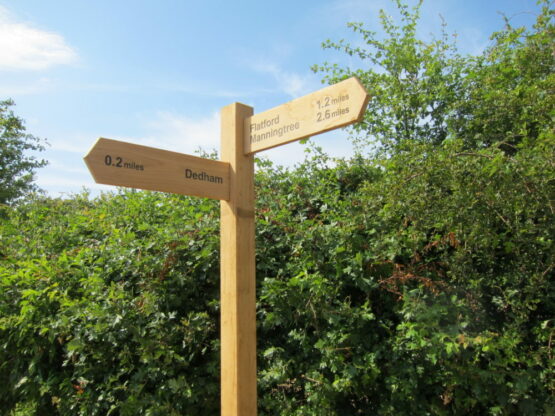Other Successes

Magnificent Meadows (2018 - present)
Wildflower rich grassland is an important habitat that is nationally scarce. On the Suffolk Essex border there are numerous grassland sites many of which have a local designation.
We are working in partnership with Suffolk Biological Information Service (SBIS) and Essex Wildlife Trust to update the records for these grassland sites known as Suffolk County Wildlife Sites and Essex Local Wildlife Sites.
Updating the records is vital for their protection, as appropriate management recommendations can be given to the landowners to ensure they are managed to maximise floristic interest and increase biodiversity.
To achieve this, we are working with Lavenham Natural History Group and trained volunteers to survey these sites over the summer period.
The survey reports are sent to the relevant record office and us, so we have a current list of species that are present on each site. To date 16 sites have been surveyed in Suffolk and some in Essex.
Past Projects

Access Improvements (2018-2019)
We upgraded signing on Public Rights of Way and other access routes between Manningtree, Dedham and Flatford in the heart of the National Landscape.
People now have encouragement to use these routes (and stay on them) as 24 new Finger Posts clearly show destinations and distances. Old and defunct signs were removed. Some of the signs have been placed on the Stour Valley Path to improve the experience of people using this sixty-mile regional route from Newmarket to Cattawade.
Also, on the Stour Valley Path existing stiles were removed (where landowner consent could be obtained) and replaced with gates. Exploring the wonderful Stour Valley is easier and safer as the new gates replace stiles that were often rickety. 30 new gates were installed.

Scattered Orchards (2015-2016)
Suffolk and Essex once had many more orchards. Some local fruit varieties have become scarce and traditional orchards as a key landscape feature are disappearing.
'Scattered Orchards' saw small groups of traditional fruit and nut trees planted on publicly accessible land so that people can enjoy the blossom in spring and gather fruit and nuts in autumn.
The new trees will grow tall and wide, also providing a habitat for wildlife. The project brought people together on their 'doorstep' and the benefits remain for future generations to enjoy. 27 'Scattered Orchards' were planted in the Dedham Vale National Landscape and wider Stour Valley.
Pollinator Patches (JPG)
This followed on from our Scattered Orchards project by working with communities to increase the number and diversity of nectar rich plants that benefit pollinating creatures such as bees.
'Pollinator Patches' were created in community spaces by planting native bulbs, wildflower seeds, and small trees and shrubs to provide nectar and pollen throughout the year.
Information boards were provided, and posters and flyers distributed to encourage more people to plant in their own gardens and local spaces. A 'Pollinator Pop Up' day was held at Flatford Wildlife Garden at which free wildflower seed and bulbs were handed out along with advice on growing these.

Proximity - Supporting tourism to attract nearby visitors
The National Landscapes of Suffolk and Essex, with support from the EU Interreg programme 2-Seas, offered training and awareness opportunities to encourage more businesses to celebrate local distinctiveness and provide visitors with tangible reasons for holidaying closer to home.
The Proximity partnership was formed in early 2014 and included ten organisations from France, The Netherlands, Belgium and the UK.
Together we shared information and supported tourism businesses to attract nearby neighbours. Find out more in our Why Travel Further publication (PDF).

